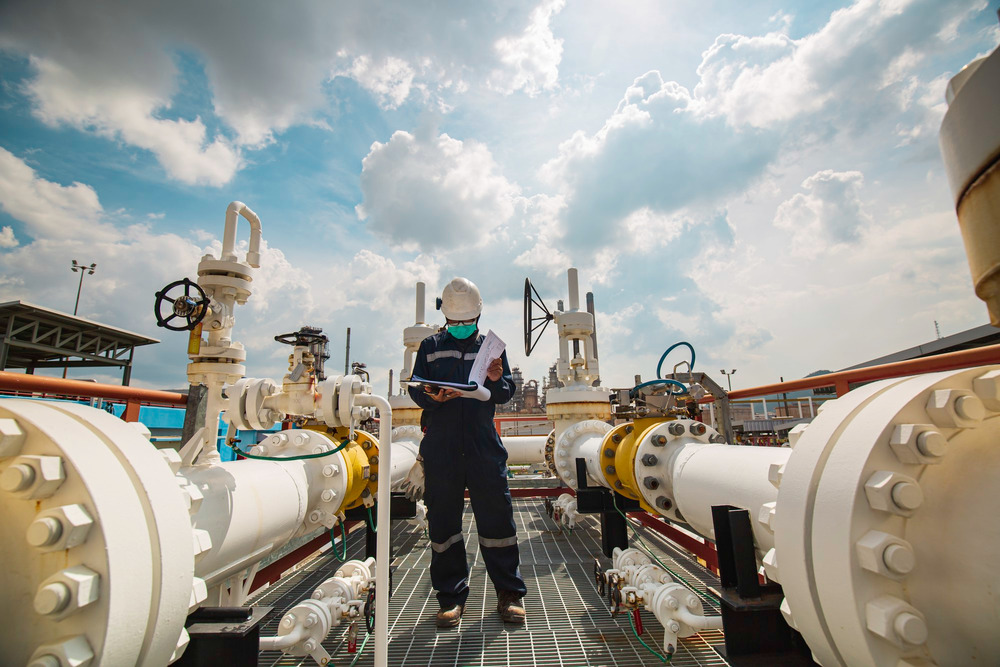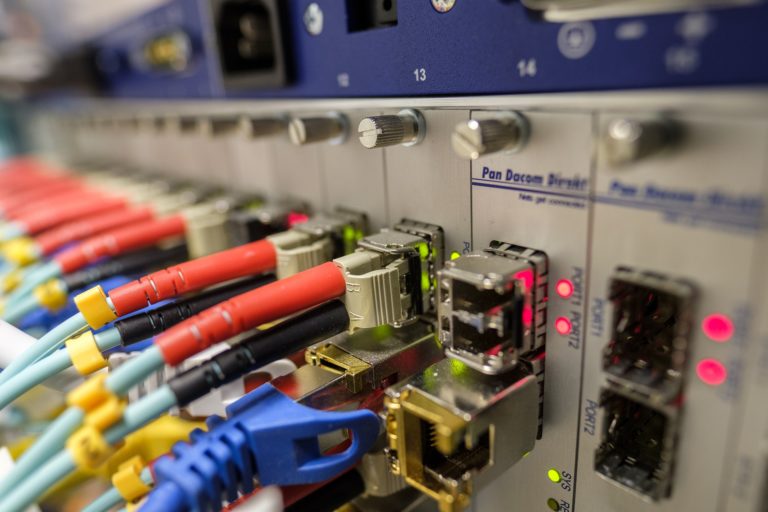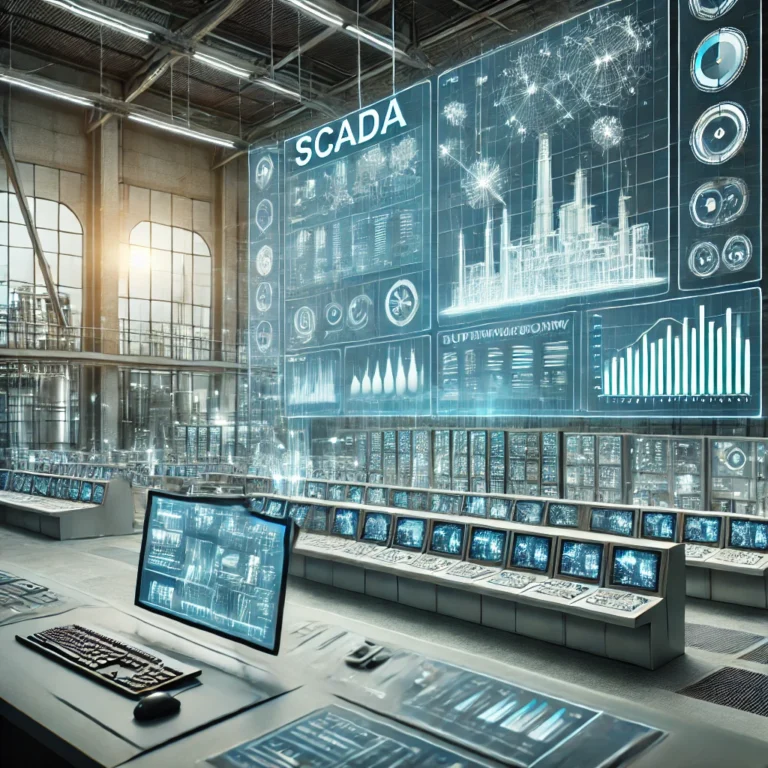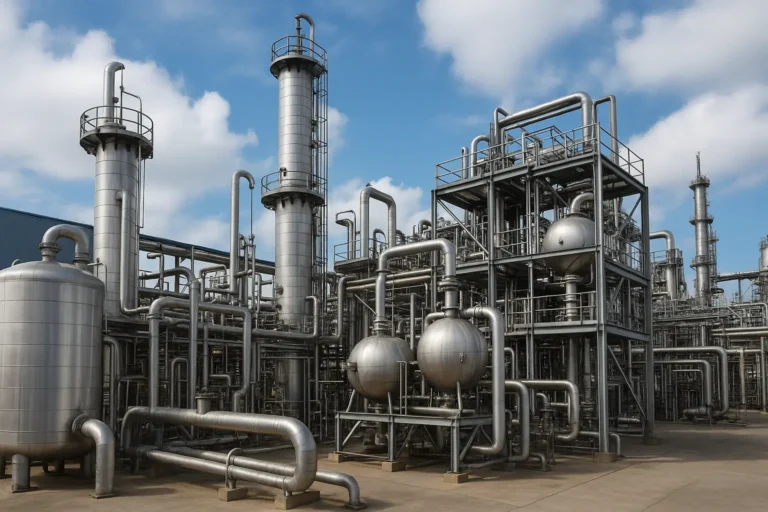What is Structured Cabling? How is it done?
Structured cabling is one of the fundamental components of modern technology infrastructure, ensuring the smooth and sustainable operation of network...
Devamını Oku

An actuator is a key component in many engineering and automation system, acting as the bridge between control signals and mechanical motion. Simply put, actuators convert energy into motion, enabling a system or device to perform physical tasks. Whether in industrial machines, robotic systems, or even everyday devices like car door locks, actuators are fundamental to modern technology.
Actuators function by receiving input signals, often electrical, pneumatic, or hydraulic, and translating these into actionable outputs such as linear or rotary motion. For example, a linear actuator creates motion along a straight line, whereas rotary actuators produce circular movement.
The importance of actuators lies not only in their functional capabilities but also in their versatility. From controlling the movement of robotic arms in factories to adjusting HVAC systems in buildings, actuators ensure smooth operation and adaptability in various applications. Understanding how actuators work and their different types provides insights into their critical role in engineering and automation.
An actuator is a device designed to convert energy into motion, enabling mechanical systems to perform specific tasks. It plays a critical role in automation systems by providing the physical motion or force needed for a device to function. Without actuators, most modern machinery and automated processes would be impossible to achieve.
The core function of an actuator is to receive an input signal—this could be electrical, pneumatic, or hydraulic energy—and transform it into a mechanical output. For example, an electric linear actuator converts electrical energy into linear movement, which is commonly used in precise positioning systems. On the other hand, a pneumatic actuator uses compressed air to generate motion, offering reliability and cost-effectiveness in industrial settings.
Their ability to provide motion, whether in a straight line or rotational path, makes them indispensable in modern engineering. Their applications range from moving robotic arms to opening valves in chemical plants, showcasing their importance in various industries.
Actuators are at the heart of many automated systems, performing tasks that involve motion or force application. By transforming energy into mechanical movement, actuators enable machines and devices to execute physical actions with precision and efficiency. Whether it’s opening a valve, moving a robotic arm, or adjusting a car seat, the actuator’s role is to make controlled and purposeful motion possible.
In practical terms, actuators provide the necessary movement for systems to function effectively. For instance, a linear actuator moves components in a straight line, often used in applications requiring precise alignment or positioning, such as conveyor belts or medical devices. Similarly, pneumatic actuators are widely utilized in industrial environments to perform repetitive tasks reliably using compressed air, while hydraulic actuators deliver powerful motion for heavy-duty applications.
Actuators also contribute to enhancing system safety and performance. In building systems, for example, they regulate HVAC equipment to maintain optimal indoor conditions. In the automotive sector, they control functions like braking or steering mechanisms. By performing such critical tasks, actuators ensure that machines operate smoothly, safely, and efficiently across various industries.
Actuators operate by converting input energy into mechanical motion or force, enabling machines and systems to perform specific tasks. This process typically involves an energy source, such as electricity, compressed air, or hydraulic fluid, which is directed into the actuator. The actuator then uses this energy to generate motion, either in a straight line (linear motion) or rotational movement.
The working principle of actuators depends on their type. For instance, an electric actuator uses an electric motor to create motion, making it ideal for applications requiring precision, such as robotic systems. In contrast, pneumatic actuators rely on compressed air to move a piston or diaphragm, commonly used in environments where simplicity and cost-effectiveness are priorities. Hydraulic actuators operate similarly but use pressurized fluid, offering the advantage of handling high-force applications, such as lifting heavy loads.
Modern actuators often include feedback mechanisms like sensors to enhance control and accuracy. These mechanisms allow the actuator to adjust its motion based on real-time data, ensuring precise and efficient operation. This is particularly critical in industrial automation, where maintaining accuracy and reliability can directly impact productivity and safety.
Actuators come in various types, each suited for specific applications and energy sources. Understanding the different actuator types helps determine the most suitable option for a particular system or process. Broadly, actuators are categorized based on their operating mechanism, such as electric, pneumatic, hydraulic, and specialized variants like thermal actuators.
Each type of actuator serves unique purposes and is selected based on factors like precision, force requirements, speed, and environmental conditions. By leveraging the right type, industries can achieve optimal performance and efficiency in their operations.
Electric actuators are devices that convert electrical energy into mechanical motion, offering precision and versatility in automation systems. They are widely used in applications where accurate and reliable motion control is essential, such as robotics, manufacturing equipment, and building automation systems.
A key advantage of electric actuators is their ability to provide precise motion with minimal energy loss. For instance, an electric linear actuator can perform tasks like lifting, pushing, or pulling with exceptional accuracy, making it suitable for delicate operations in industries like healthcare and electronics. Additionally, electric actuators are easy to integrate with advanced control systems, enabling seamless operation in modern automation systems.
These actuators are also favored for their low maintenance requirements and environmental benefits, as they eliminate the need for hydraulic fluids or compressed air. With features like programmable control and feedback mechanisms, electric actuators are essential in achieving precision and efficiency in today’s technological landscape.
Pneumatic actuators utilize compressed air to generate mechanical motion, making them a popular choice in industrial environments. They are known for their simplicity, durability, and cost-effectiveness, particularly in applications requiring repetitive or high-speed motion. Pneumatic actuators are integral to processes like valve automation, conveyor systems, and material handling.
The mechanism involves compressed air entering the actuator, where it pushes against a piston or diaphragm to create linear or rotary motion. This motion is then used to control mechanical systems, such as opening or closing valves. One of their main advantages is their reliability under extreme conditions, as they can operate efficiently in hazardous or high-temperature environments.
Pneumatic actuators are also lightweight and offer quick response times, making them ideal for applications in automation and factory settings. Their versatility is further enhanced by the wide range of types of pneumatic actuators available, such as single-acting and double-acting variants, tailored to specific operational needs.
Hydraulic actuators use pressurized fluid to produce mechanical motion, offering unparalleled force and power. They are commonly employed in heavy-duty applications such as construction machinery, industrial presses, and marine equipment, where significant force is required to move or lift heavy loads.
The operating principle involves hydraulic fluid being pumped into the actuator, where it exerts pressure on a piston or cylinder to create motion. This motion can be linear or rotary, depending on the actuator design. Hydraulic actuators are highly efficient in converting energy into motion and excel in environments demanding high force and precise control.
One of the main advantages of hydraulic actuators is their ability to handle substantial loads while maintaining smooth and steady operation. Their robustness and reliability make them indispensable in industries like construction, aviation, and manufacturing. However, they require regular maintenance to manage potential leaks and ensure the integrity of the hydraulic system.
Actuators have a wide range of applications, enabling motion and control in various industries and everyday scenarios. Their ability to convert energy into mechanical motion makes them indispensable for tasks requiring precision, force, or automation. From large-scale industrial operations to small household devices, actuators play a crucial role in enhancing functionality and efficiency.
In automation, actuators are used to control robotic arms, operate valves, and manage conveyor systems, ensuring seamless and reliable operations. They are also a cornerstone of building automation, regulating HVAC systems, adjusting lighting, and optimizing energy usage. In addition, actuators find applications in the defense industry and aviation, where they enable the movement of aircraft control surfaces, missile systems, and more.
Actuators are equally important in daily life, powering devices like automatic doors, washing machines, and adjustable furniture. Their diverse applications highlight their versatility and their critical role in modern technological advancements.
Actuators are integral to automation, driving the efficiency and precision of countless processes. In manufacturing facilities, they operate robotic arms for tasks such as welding, assembly, and material handling. Similarly, in industries like oil and gas, actuators control valves and pumps, ensuring the safe and accurate flow of materials through pipelines.
Their ability to handle repetitive tasks with reliability makes actuators ideal for conveyor systems, production lines, and packaging operations. For example, pneumatic actuators are often chosen for their speed and durability, while electric actuators provide precision in tasks requiring meticulous positioning.
Actuators also play a significant role in industrial automation systems, where they are integrated with sensors and controllers to create smart, responsive setups. This integration allows for real-time adjustments, optimizing productivity and minimizing downtime in critical operations.
Actuators are not limited to industrial environments; they play a significant role in enhancing the convenience and functionality of everyday devices. From automatic doors at shopping centers to adjustable recliners in homes, actuators simplify daily tasks by automating motion.
One of the most common examples is in household appliances. Electric actuators are found in washing machines, where they control drum movements, and in dishwashers, where they manage spray arms. Similarly, linear actuators are used in adjustable beds and ergonomic furniture, providing comfort and adaptability with precise motion.
In the automotive industry, actuators control essential functions like power windows, seat adjustments, and even braking systems. These components are designed to operate seamlessly, ensuring both comfort and safety in daily life. Actuators’ ability to integrate into various devices highlights their versatility and importance in modern living.
In the defense industry and aviation, actuators are critical for ensuring precision and reliability in high-stakes operations. They are used in applications ranging from controlling aircraft surfaces to powering weapon systems, contributing to both functionality and safety.
For aviation, actuators enable the movement of flaps, rudders, and landing gear. Hydraulic actuators are particularly common due to their ability to handle the immense force required for these tasks. Similarly, electric actuators are increasingly used in modern aircraft for their lightweight and efficient design, enhancing overall performance.
In the defense sector, actuators play a vital role in missile guidance systems, turret controls, and unmanned vehicles. Their ability to provide rapid, accurate motion makes them indispensable for applications where precision is paramount. Actuators in this domain are designed to operate reliably under extreme conditions, ensuring operational readiness and efficiency.

Structured cabling is one of the fundamental components of modern technology infrastructure, ensuring the smooth and sustainable operation of network...
Devamını Oku
SCADA (Supervisory Control and Data Acquisition) is a comprehensive system designed to monitor, control, and manage industrial processes in real...
Devamını Oku
Chemical plant installation is a complex and critical process that involves multidisciplinary engineering efforts, strategic planning, and strict adherence to...
Devamını OkuPROTECTION OF PERSONAL DATA
WEBSITE COOKIE POLICY
Your personal data; It is one of the leading principles of our Organization to protect the privacy of visitors to the website (www.adatech.com.tr) operated by ADATECH as the data controller. This Cookie Usage Policy (“Policy”) explains to all our website visitors and users which types of cookies are used and under what conditions.
Cookies are small text files stored on your device or network server by websites you visit on your computer or mobile device.
They are generally used to provide you with a personalized experience during your use of the website you visit, to improve the services offered and to improve your experience, and may contribute to ease of use while browsing a website. If you do not prefer the use of Cookies, you can delete or block Cookies in your browser settings. However, we would like to remind you that this may affect your use of our website. Unless you change your cookie settings in your browser, we will assume that you accept the use of cookies on this website.
1. WHAT KIND OF DATA IS PROCESSED IN COOKIES?
Cookies on websites, depending on their type, collect data about your browsing and usage preferences on the device you visit the site. This data includes information about the pages you access, the services and products you review, your preferred language option and other preferences.
2. WHAT is a solution and what are its intended uses?
Cookies are small text files that are stored on your device or network server through browsers by websites you visit. These small text files, which contain your preferred language and other settings on the site, help us remember your preferences the next time you visit the site and make improvements to our services to improve your experience on the site. Thus, you can have a better and personalized usage experience on your next visit.
The main purposes of using cookies on our Website are listed below:
3.TYPES OF COOKIES USED ON OUR WEBSITE
3.1. Oturum Çerezleri
Session cookies ensure that the website functions properly during your visit. They are used for purposes such as ensuring the security and continuity of our sites and you during your visit. Session cookies are temporary cookies, they are deleted when you close your browser and come to our site again, they are not permanent.
3.2. Persistent Cookies
These types of cookies are used to remember your preferences and are stored on your device via browsers. Persistent cookies remain stored even after you close your browser or restart your computer from which you visited our site. These cookies are kept in subfolders of your browser until they are deleted through your browser’s settings.
Some types of persistent cookies may be used to provide you with special suggestions, taking into account issues such as your purpose of using the Website.
Thanks to persistent cookies, if you visit our Website again with the same device, it is checked whether there is a cookie created by our Website on your device and if there is, it is understood that you have visited the site before and the content to be transmitted to you is determined accordingly and thus a better service is provided to you.
3.3. Mandatory/Technical Cookies
These cookies are essential for the website you visit to function properly. The purpose of such cookies is to provide necessary services by enabling the website to function. For example, it allows you to access secure parts of the website, to use its features, to navigate on it.
3.4. Analytical Cookies
They collect information about the way the website is used, the frequency and number of visits, and show how visitors navigate to the site. The purpose of using such cookies is to increase performance by improving the way the site functions and to determine the general trend direction. They do not contain data that could enable the identification of visitors. For example, they show the number of error messages displayed or the most visited pages.
3.5. Functional/Functional Cookies
It saves the choices made by the visitor within the site and remembers them on the next visit. The purpose of such cookies is to provide ease of use to visitors. For example, it prevents the site user from re-entering the user password on each page they visit.
3.6. Targeting/Advertising Cookies
They enable the measurement of the effectiveness of advertisements served to visitors and the calculation of the number of times the advertisements are viewed. The purpose of such cookies is to serve ads customized to the interests of visitors.
Likewise, they enable the detection of visitors’ interests specific to their browsing and the presentation of appropriate content. For example, it prevents the advertisement shown to the visitor from being shown again in a short time.
4. HOW TO MANAGE COOKIE PREFERENCES?
To change your preferences regarding the use of cookies or to block or delete cookies, simply change your browser settings.
Many browsers give you the option to accept or reject cookies, accept only certain types of cookies, or be alerted by the browser when a website requests to store cookies on your device so that you can control cookies.
It is also possible to delete cookies previously saved in your browser.
If you disable or refuse cookies, you may need to set some preferences manually, some features and services on the website may not function properly as we will not be able to recognize and associate your account. You can change the settings of your browser by clicking on the relevant link from the table below.
5. ENFORCEMENT OF WEBSITE PRIVACY POLICY
Website Privacy Policy …./…./…./…. . is dated. In case all or certain articles of the Policy are renewed, the effective date of the Policy will be updated. The Privacy Policy is published on the website of the Authority (www.adatech.com.tr) and made available to the relevant persons upon the request of the personal data owners.
ADATECH
Address: Esenyalı Neighborhood Yanyol Street Varyap Plaza No:61-148 Pendik / Istanbul
Telephone: +90 (216 ) 514 80 69
E-mail: [email protected]
Web Address: www.adatech.com.tr